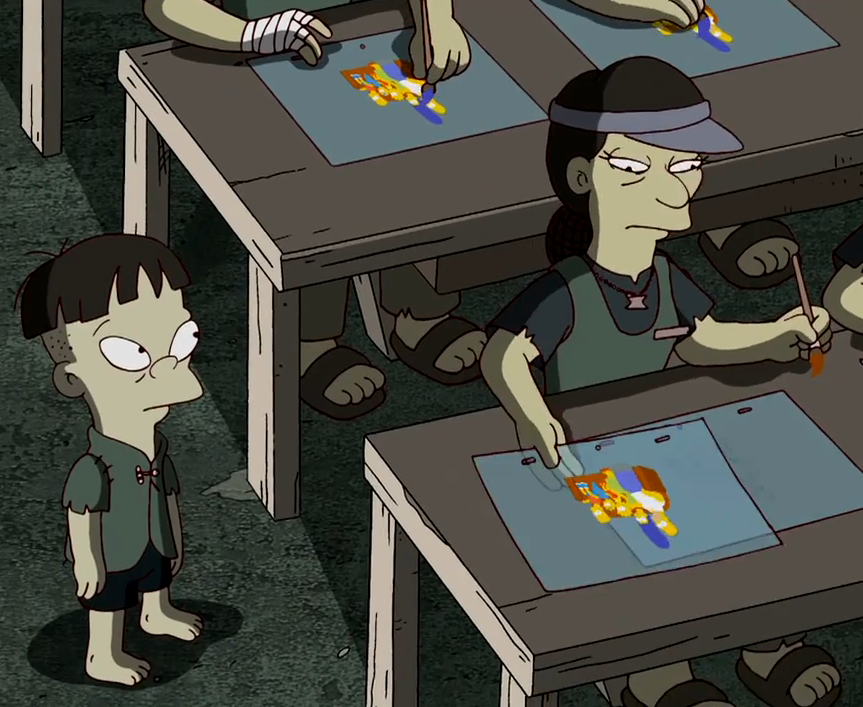 We’re getting to this rather late. But yesterday, the internet was all a-twitter with the news that elusive street artist Banksy story boarded and directed the opening segment of The Simpsons—with subversive results. The segment depicts slave and child labor, and animal cruelty in the production of The Simpsons merchandise and animation. Asian laborers toil in unsanitary, dangerous working conditions, under ground, behind barbed wire, drawing the animation cells of the cartoon, stuffing Bart Simpson dolls and putting together DVDs.
We’re getting to this rather late. But yesterday, the internet was all a-twitter with the news that elusive street artist Banksy story boarded and directed the opening segment of The Simpsons—with subversive results. The segment depicts slave and child labor, and animal cruelty in the production of The Simpsons merchandise and animation. Asian laborers toil in unsanitary, dangerous working conditions, under ground, behind barbed wire, drawing the animation cells of the cartoon, stuffing Bart Simpson dolls and putting together DVDs.
Banksy, no doubt, was making a dig at the fact that The Simpsons’ animation is partially subcontracted to studios in South Korea—a cost cutting measure for 20th Century Fox.
More and more, awareness is being raised about slavery in the supply chain of commonly used products. Just last month, California Governor Arnold Schwarzenegger signed into law the California Supply Chain Transparency Act (SB 657), which requires all companies that sell products in California and gross over $100,000 a year globally, to voluntarily disclose what they are doing to ensure slave free supply chains. And research done by Free the Slaves indicates that slavery is pervasive in Congo mines, from which we derive the minerals used in cell phones and lap tops.
As readers of this blog know, I am all for popular culture incorporating modern day slavery into mainstream discourse. (I’ve written about Lady Gaga’s controversial—some might say cavalier—take on sex trafficking in her music video for “Bad Romance”). Experience shows us that vigilant communities can keep traffickers at bay. Amazingly, many still are unaware that slavery is not a thing of the past. The more people are aware, the more people will be vigilant for the signs of slavery—and the more people will work to end it.
As of this writing, almost 2.5 million people have viewed the Banksy-Simpsons collaboration on YouTube. That’s some good outreach!



